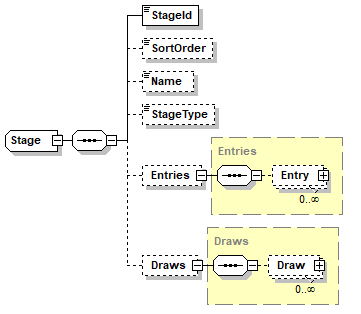Introduction to the Stage
DRAFT DOCUMENTATION
Please note that this documentation is in draft and is not finalised.
We would encourage you provide any comments, questions, or suggestions for changes by use in-line commenting on this page. To do so simply highlight a section of text and then click on the "Comment" option that appears.
1. What is a Stage?
A stage is, simply, a part of an event. For example, A tournament's event may be the wheelchair quads. This could be split into two stages, the qualifiers and the main competition.
Of course, this can be done using draws. However, some events can require multiple qualifying draws, complex consolation draws and a number of different draw structures as part of their main draw. Allocating points won, determining entries status, recording wins, working out final positions etc in these scenarios becomes increasingly complex. Sitting between event and draw, a stage exists as another layer to help provide a clearer and simpler understanding.
2. Stage Schema
To see a graphical representation of the data model (schema) for the Stage entity please expand the link below:
3. Creating a Stage
The mandatory information required to create a Stage is a StageId. If the Event contains only a single stage then a StageType of 'Main Stage' would be assumed unless otherwise provided. If the Event contains more than one stage it is strongly recommended to provide a Name and a StageType.
Single Stage
2 Stages
Multiple stages and Draws
4. StageID
In StageID you must supply your unique identifier for the Stage. The value must be unique within the tournament. You can use any value but a unique identifier can easily be created by concatenating the EventId with information about the Stage.
Related Information
- Introduction to the Person
- Introduction to Rankings
- Introduction to the Tournament
- Introduction to Participants
- Introduction to the Event
- Introduction to the Stage
- Introduction to the Draw
- Introduction to the Match
- Introduction to Ties
Go back to Tennis Open Data Standards home page.
